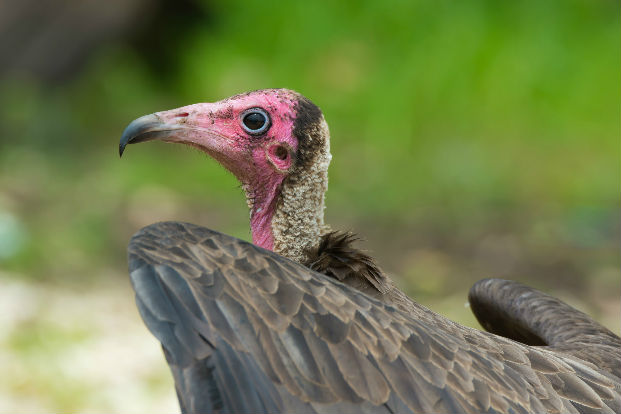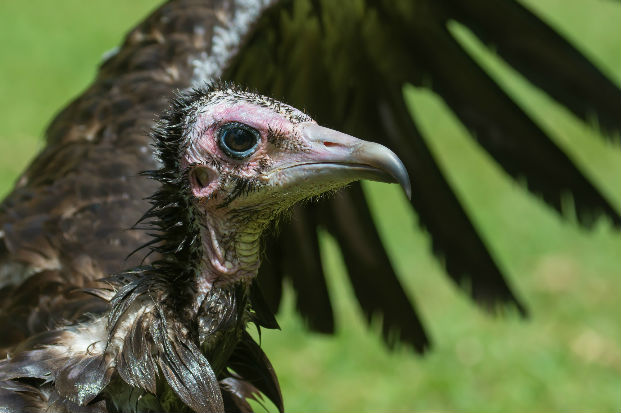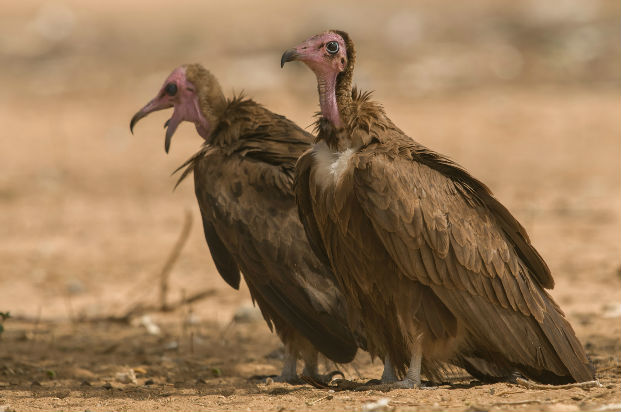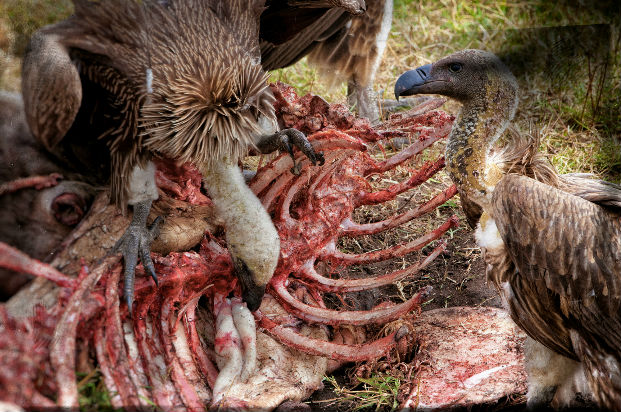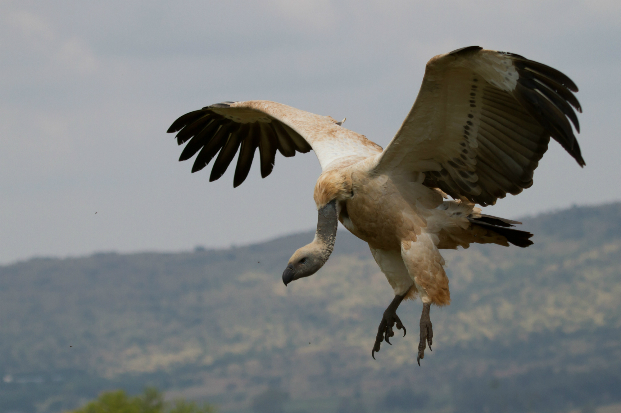Vultures are known for their circling flight as they ride the thermals to get height in search for carcasses. Vultures live on all continents with the exception of Antarctica and the Arctic. The new world vultures of the Americas find their prey through an excellent sense of smell and the old world vultures of Africa, Europe and Asia detect carcasses by sight. There is no group of birds anywhere in the world that are more endangered than vultures. Their huge decline is due to poisoning from carcasses containing veterinary medicine along with a loss of habitat. More recently poachers are known to poison vultures to prevent these scavengers from alerting the authorities to fresh rhino or elephant carcasses when they flock to it.
Vote for the fact you find most fascinating
A vulture’s eyesight is believed to be 8 times better than mans. They can clearly see a 6 cm object from a height of 1 km.
The stomach acid of a vulture is strong enough to destroy many dangerous diseases such as anthrax and cholera which they may ingest when eating a carcass.
Vultures can fill a storage sock, known as a crop, of 1.4 kg of meat in just 2 minutes. Whilst in the crop the food remains undigested, this adaptation benefits the bird which cannot rely on daily feeds.
Studies show that mammalian carnivores such as lions and hyena can only eat 30% of the dead herbivores available. The rest are cleaned up by vultures, maggots and bacteria.
A Ruppell’s vulture was struck by an aircraft at 37,000 feet, this is the highest recorded flight by a bird. Studies on this species show blood and cardiovascular adaptations so that it is able to breathe at such an altitude.
Stomach acid allows the bearded vulture to extract nutrition from bones left by other vultures, these make up 70 to 90 per cent of its diet.
Rather than following the rains and associated herds of wildebeest and zebra, vultures instead, target areas of drought to scavenge the animals that have perished.
A vultures eyes are very large in comparison to the rest of their body. This enables a larger image to fall on the retina and therefore more detail can be seen.


